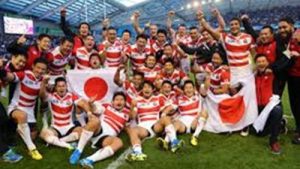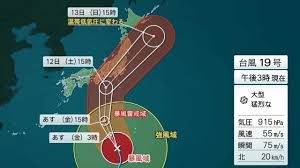今年のノーベル化学賞は、充電できるリチウムイオン電池の開発で、旭化成名誉フェローの吉野彰氏(71)、米テキサス大教授のジョン・グッドイナフ氏(97)とニューヨーク州立大特別教授のマイケル・ウィッティンガム氏(77)3人に贈られることになりました。
Akira Yoshino, an honorary fellow with Asahi Kasei Corp., is one of three co-recipients of this year’s Nobel Prize in Chemistry for developing the basic technology of rechargeable lithium-ion batteries. The co-laureates are John Goodenough of the University of Texas, and M. Stanley Whittingham of Binghamton University, State University of New York.
※電池は a (cell) batteryやcellもOK cellが集まったものがbattery
※ノーベル賞はNobel Peace Prize(平和賞)以外は、通常Nobel Prize in 分野の順番です。
※ionは、[áiən]と発音します。イオンと読まないように注意!
グッドイナフ氏はノーベル各賞を通じ最高齢受賞となりました。
At 97 years old, Goodenough is the oldest laureate to receive a Nobel prize in any discipline.
※laureate=栄誉の印として月桂冠laurelを頂いた人、受賞者、栄誉を受けた人
※discipline=(教授・教育立場から見た)学科、学問分野、研究科目、研究分野
ノーベル委員会は受賞理由について、リチウムイオン電池は、軽量かつ高出力で、様々な電子機器に使われ、生活に革命を起こし、化石燃料に頼らない社会の基礎となったと述べました。
The Nobel Committee said: “Lithium-ion batteries have revolutionized our lives and are used in everything from mobile phones to laptops and electric vehicles. Through their work, this year’s chemistry laureates have laid the foundation of a wireless, fossil fuel-free society.”Lithium-ion batteries are also an important technology in enabling the world to move away from fossil fuels.・“We need to find a way to emancipate ourselves from dependence on burning fossil fuels.”(グッドイナフ氏の言葉)
※revolutionize=大変革をもたらす →game changer(試合の流れを一気に変えてしまう活躍をする選手、大きな影響を与える革新的な物)
※emancipate =解放する
電池が電子機器を動かすとき、電子が電気回路の陽極から陰極に流れ、プラスに帯電した(正電気を帯びた)が電解液を介して移動します。
Both electrodes (電極)are connected to an electrical circuit(配電回路). When the battery is powering an electrical device, electrons(電子) travel from the anode(陽極) to the cathode (陰極) through the electrical circuit, while positively charged ions move through the electrolyte(電解液). In a rechargeable battery, energy can be put into the device to reverse this process.
※anode=陽極、アノード ギリシャ語でgoing upの意味 the plus poleもOK
※cathode =陰極、カソード ギリシャ語でdescentの意味 the negative pole もOK
石油危機=oil crisisがあった70年代の頃から、多くの研究者が挑戦したものの、安全上の問題点もあり、実用化が難しかった充電式電池。
While rechargeable batteries were around in the 1970s, they had drawbacks (欠点、落ち度、不利), not least in the amount of energy they could store. Lithium, it was thought, could be an answer since it is a very light metal and easily loses an electron. However, lithium’s reactivity also made it tricky to harness.
※not least=少なからず、特に
※reactivity=反応性
※tricky=手ぎわを要する、扱いにくい、きわどい、こうかつな、油断のならない、巧妙な
※harness=自然力を動力化する,〈自然力を〉利用する. 名詞で馬具
同時受賞の二人の功績を元に、吉野さんは、商業的に利用できる電池を作りました。
Whittingham developed the first functional lithium-ion battery in the early 1970s. Goodenough doubled the battery’s potential in the following decade. Then Yoshino eliminated pure lithium from the battery, making it much safer to use. He created the first commercially viable lithium-ion battery in 1985.
※viable=①〈計画など〉存立[存続]できる,実行可能な ②〈胎児・新生児が〉生存[生育]できる.
急いで用意された記者会見=a hastily arranged news conferenceで、吉野さんは『実験が醍醐味だ』と語りました。
“The true thrill of research lies in the experiments. Experiments are especially interesting when they produce unexpected results.”
※醍醐味=genuine delight/true joy/real pleasure/nectar等
吹田出身で北野高校から京大工学部に進み石油化学を専攻した吉野さん。考古学同好会所属でした。考古学と化学は共通点があると語られました。
He entered Kyoto University, where he majored in petrochemistry(石油化学), one of the most popular subjects in those days. He joined an archaeology club and visited excavation sites in Kyoto and Nara prefectures on a daily basis.・“Even though archaeology is a totally different field, research in archaeology bears many similarities with chemistry. They are extremely loyal to the facts. It's just like science based on experiments.”


